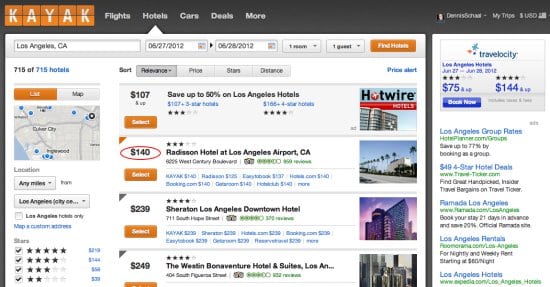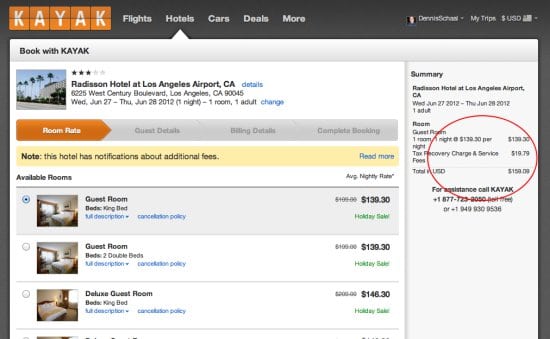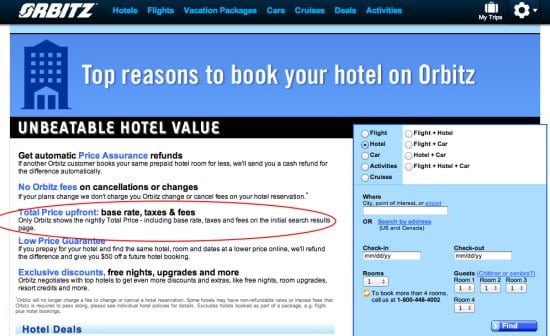Skift Take
Travelers need to see the total price of a hotel room instantly, but online travel agencies and comparison-shopping engines have bowed to competitive pressures.
It’s tough to buck the entire online travel industry on hotel-pricing transparency, and Kayak’s mobile apps are apparently solitary holdouts, although you have to wonder how long they will maintain this status.
One of the biggest hassles for consumers when shopping online for a hotel stay is that most online travel agencies and travel metasearch engines prominently display a property’s base rate, but then you have to click through to the next screen and do a lot of research to gauge varying companies’ total prices, including taxes and fees, for the room.
The differences can be substantial.
Kayak now finds itself in a precarious and complicated position: It shows the total price of a stay upfront as the default in its iPhone and iPad apps, but displays merely the base rate in bold numbers — sans taxes and fees — on Kayak.com.
If you search for Los Angeles hotels for a June 27 stay in Kayak’s iPhone and iPad apps, then right upfront you’ll see that the total rate for a king bed at the Radisson Hotel at Los Angeles Airport, when booked through Kayak, is $159 per night.
But, on Kayak.com the initial hotel search results page shows the hotel’s room rate as $140.
Hint: Despite the disparity, the room rate isn’t any cheaper on Kayak.com.
You can mouse over the base rate on the desktop and see the room’s total price, but the point size is so small it seems, well, besides the point.
As a practical matter on Kayak.com, you’d have to click through to the next screen to find out that you’d have to kick in another $20 in taxes and fees, and that the total price for the room actually is $159 per night.
The different initial price points, website versus mobile apps, can be confusing to Kayak’s customers if they alternately use desktop or mobile devices.
Failing to display the total rate on the desktop is a disservice to travelers, although all of Kayak’s competitors are likewise guilty as charged.
Kayak’s user testing has found that displaying the total price on the website has a negative impact so you shouldn’t expect much of a change there anytime soon.
“Well, we hate that the industry doesn’t make it [total price] the default,” says Robert Birge, Kayak’s chief marketing officer, who concedes that having its mobile apps display the total rate may not be a permanent thing.
In other words, competition is killing off the last remnants of hotel total pricing for intermediaries, although Kayak promises to iterate to get to the right solution in terms of clarity and consistency.
If Kayak eventually abandons total hotel pricing on its iPhone and iPad apps, it would be following a trail that Orbitz blazed with much publicity several years ago.
In 2009, Orbitz became the first major online travel agency to show a room’s total price, including taxes and fees, on the first screen on Orbitz.com. And, Orbitz used the practice as a competitive differentiator.
But, Orbitz quietly abandoned its Orbitz Total Price policy in June 2011 and now shows merely the base rate in initial search results.
With Orbitz out of the picture on this front and Kayak fading, It seems likely that the quest to show total rates for hotels will be relegated to the dustbin of online travel history, and the consumer will be left to deal with the mess.
Author: Dennis Schaal
The Daily Newsletter
Our daily coverage of the global travel industry. Written by editors and analysts from across Skift’s brands.
Have a confidential tip for Skift? Get in touch


